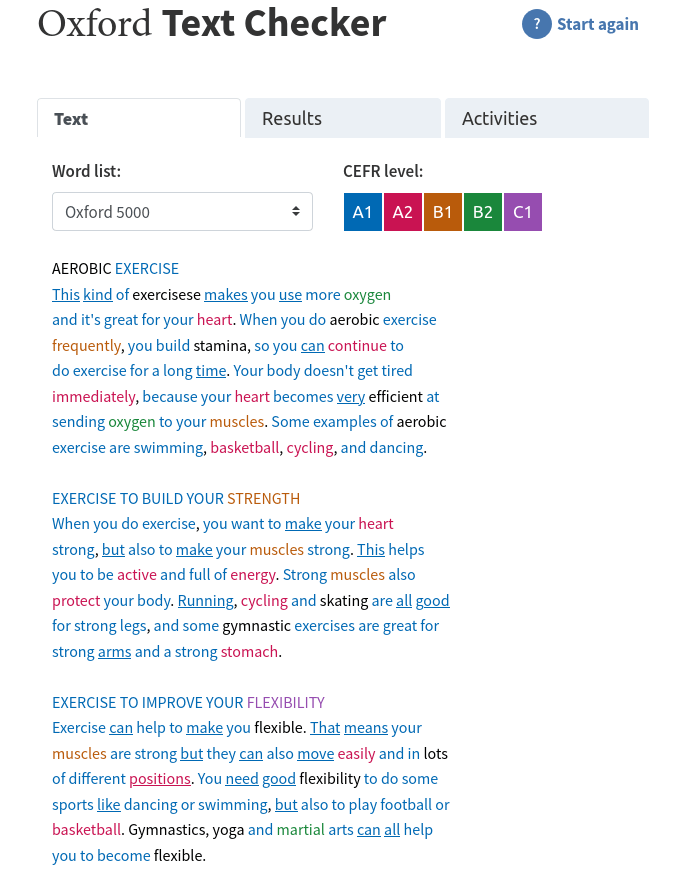We teach vocabulary in almost every lesson. Words that prevent understanding, new lexis, emergent vocabulary — all of these are relatively easy to put across. However, sometimes, while looking through tasks before the lesson, we can’t but anticipate problems. In today’s article, you will find 5 main possible problems which we face while teaching vocabulary. Solutions are provided, check it out!
- Problem: You have worked through the list of potentially blocking vocabulary in advance. In the lesson, you are giving a definition, but the students don’t seem to understand. Right, sometimes it might be hard for your A2 learners to understand the meaning of ‘be trapped’ by listening to ‘If someone or something is trapped, that person or thing is unable to move or escape from a place or situation’.
Solution: First, grade the language. Even if a dictionary definition is perfect, it can still pose problems to learners as their level is not enough yet. Try to simplify it or explain in your own words. Second, provide visual clues. You can bring a picture or mime the target word. Third, ask concept checking questions to make sure that students really understand.

2. Problem: You analyzed the language before the lesson and picked some vocabulary which learners might find difficult. But…they didn’t. Instead, they started asking about absolutely different words. Last week, for example, we were talking about sport with my teens. I expected the word ‘stamina’ to be new for them and thought of a way of explaining it. However, 6 people out of 6 looked at me in surprise: ‘Yes, sure. We know it from computer games. But what is ‘strength’?’
Solution: if you are not sure about what words can make your students struggle, scan the task for potentially challenging lexis with the help of a dictionary or a special tool. Cambridge Dictionary usually refers to the level of words, and services like Oxford Text Checker use colour-coding to indicate words of different levels. It can make your assumptions more precise. Also, check the material for abstract concepts or tricky words which are difficult to be explained on spot.

3. Problem: sometimes students can get confused when they come across ‘false friends’ or words which have the same translation in their L1. It often happens when the main way of teaching vocabulary is providing learners with translation. As a result, they might start using such words in a wrong or funny way. Once, I was reading a wonderful text about a student’s favourite season which said that ‘Tree kidneys are the first sign of spring’. The learner then explained that he had learned the word’s translation at school and decided to use it in his text. Confusing, since ‘buds’ and ‘kidneys’ are translated into Russian in the same way.
Solution: Teaching words through context is the key thing here. It will be much easier for learners to retrieve the right word from their memory if they met it in a meaningful text, not just a word list. Also, it’s a good idea to check understanding when you deal with words having a similar meaning. For example, explaining the difference between ‘comfortable’ and ‘convenient’, you can have a little test. Name several nouns and ask students to say if these things are comfortable or convenient:
sofa, time, shoes, jeans, location, bed, car, way
4. Problem: We often anticipate students to mispronounce words. Sometimes we base our assumptions on individual pronunciation features of certain students or common issues for everyone speaking a certain mother tongue. Anyway, it’s better to fix such problems as soon as possible to make sure it won’t get fossilized.
Solutions: Good old drills can help you out. They can be done in groups and pairs, in a funny or a bored voice, quietly or loudly, you name it. Also, you can collect a number of potentially difficult lexical items, put them in a column on the board, and ask students to read them out one by one. If a student mispronounces some word, the next student has to start from the beginning. The aim is saying all the words right, for sure. Sometimes it’s a useful idea to draw students’ attention to specific sounds with the help of phonemic symbols.
5. Problem: Students refuse to use the target vocabulary in their speech. Sounds familiar, right? Meaning, form and pronunciation are checked, practice exercises are done, the word has been met in listening, reading and grammar tasks. Despite this fact, students keep saying basic ‘happy’ instead of fancy ‘elated’.
Solution: If you want students to use the vocabulary in the final discussion or role-play, you can provide each student with a card containing 2-3 lexical items and ask to cross out the word when it is used. Also, you can play experts (see the game description here) or just tell students to write several sentences with the target words and then read them out loud, substituting the word with a sound and inviting others to guess. For example:
- ’Sports like running and swimming improve your buzz.
- Strength?
- No!
- Stamina?
- Yes!
Personalized examples also work well enough as we remember better what is important for us.
And, finally, don’t worry and give them time. Researches claim that it takes a student a minimum of 14-20 encounters with the word in meaningful contexts to start actually using it, not just recognizing.
All in all, the above-mentioned problems can be solved with a bit of language analysis before the class and some monitoring and reflection while working. This will contribute to learners’ vocabulary expansion and help them use target lexis with accuracy and ease.
Which of the problems is the most common for your students?
Speaking activities are, obviously, essential for English language speaking classes. A lot of students join classes particularly to develop their communicative competence, become more fluent, versatile, adaptable, and confident communicators in English. However, designing speaking activities might be time-consuming and nerve-wracking for any teacher. We have prepared a memo with superb ready-made speaking tasks that will make your student talking. Download it here.






 Вероника Аветисян
Вероника Аветисян 
 Маргарита Аветисян
Маргарита Аветисян 


